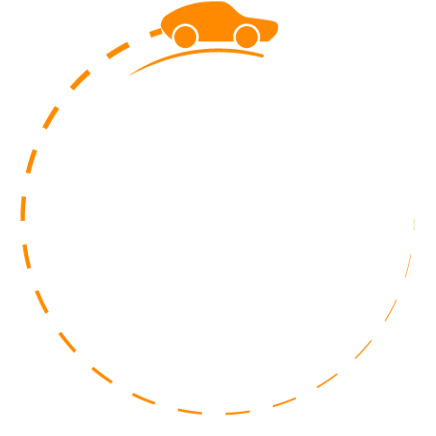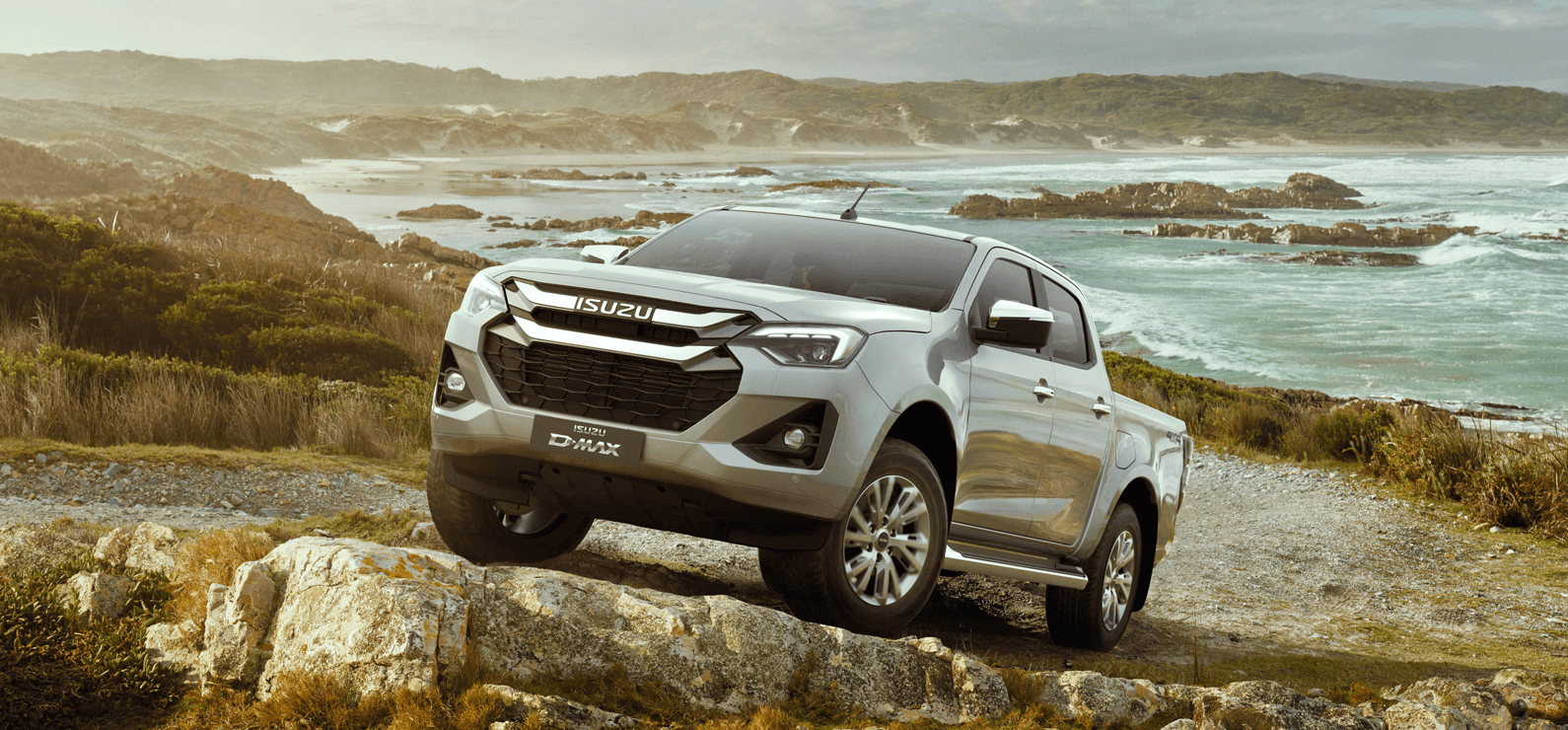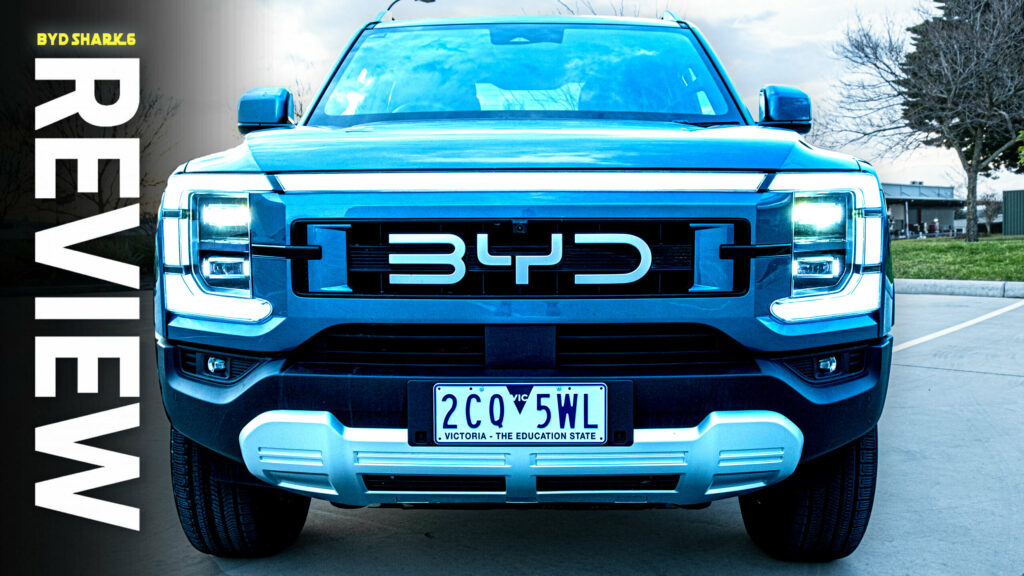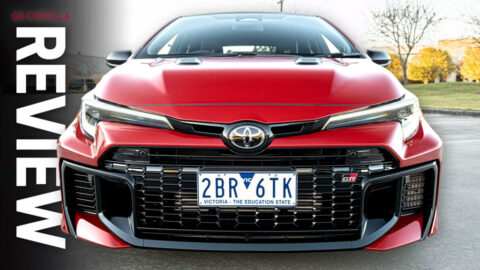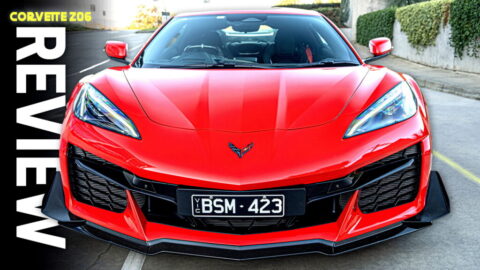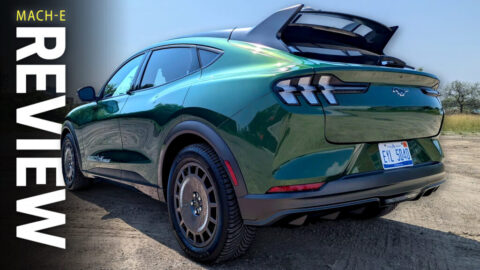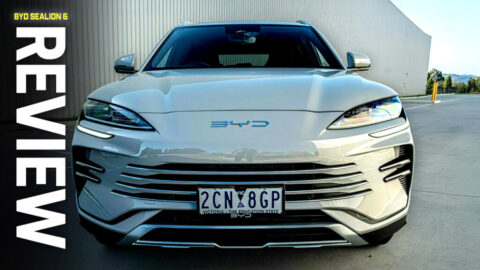Venturing into Australia’s crowded pickup truck segment was a brave decision by BYD. Not only is the automaker a relatively new entrant into the local market, but established players like the Toyota Hilux, Ford Ranger, Mitsubishi Triton, and Isuzu D-Max have dominated this segment over the past decade. Even so, the gamble makes sense. Utes are big business in Australia, with three of the nation’s ten best-selling vehicles being pickups, including Ford’s chart-topping Ranger.
What’s more, all of these rivals are fairly traditional, offering tried-and-tested diesel powertrains that have proven to be well-rounded and reliable, making them ideal options for workers, businesses and, in recent years, many families as well. Not only does the Shark 6 come from a relatively young brand, but it’s also one of just three plug-in hybrid trucks sold locally.
Despite facing tough competition, it’s already proven to be a hit. Through the first seven months of this year, no fewer than 11,657 examples had been sold Down Under, edging out the all-new Triton, the facelifted Mazda BT-50, the Nissan Navara, and the VW Amarok. The only rivals to outsell the Shark 6 were the Isuzu D-Max, Toyota Hilux, and Ford Ranger.
Why has BYD’s latest plug-in hybrid been such a success? As we recently discovered, it sets new standards for on-road driving prowess, is priced sharply, and has plenty more going for it. It might just be the best option for pickup buyers who will spend most of their time driving on the road.
QUICK FACTS
SWIPE
*Manufacturer
Photos Brad Anderson/Carscoops
What Is It?
In Australia, the BYD Shark 6 is sold in a single configuration, priced from AU$57,900 ($38,300) excluding on-road costs. That allows it to undercut the entry-level GWM Alpha Lux PHEV by AU$2,090 ($1,380), and the Cannon Alpha Ultra PHEV that we recently tested by AU$9,090 ($6,000). It’s also far cheaper than the Ford Ranger PHEV, which starts from an eye-watering AU$71,990 ($47,600) and tops out at AU$86,990 ($57,600).
Read: Toyota’s Next Hilux Rumored To Break Cover In November
So, what do you get for your money? For starters, it utilizes a 1.5-liter turbocharged four-cylinder that delivers 181 hp (135 kW) and 260 Nm (192 lb-ft) of torque. These figures alone aren’t very impressive. However, providing supplemental power is two electric motors. All up, the Shark 6 delivers 430 hp (321 kW) and 479 lb-ft (650 Nm). That’s some serious grunt, outgunning even the Ranger Raptor with its 392 hp (292 kW) and 583 Nm (430 lb-ft).
Much like the Cannon Alpha PHEV, the Shark 6 has a sizeable battery pack, listed at 29.58 kWh. That’s enough to give it more than 100 km (62 miles) of electric-only driving range, which is not to be scoffed at.

Other important figures for the Shark 6 are a payload capacity of 790 kg (1,741 lbs) and a braked towing capacity of 2,500 kg (5,511 lbs). Those figures are down on more traditional diesel rivals, most of which offer up 3,500 kg (7,716 lbs) of towing. However, BYD is working on an uprated Shark 6 that’ll also be capable of towing 3.5 tonnes, but won’t launch until 2026 at the earliest.
A Class-Leading Cabin
The features and quality of the Shark 6’s cabin are far beyond any other vehicle in this segment (although we’ve yet to test the Kia Tasman). Indeed, it pushes the standard so far forward that legacy rivals had better up their game for future models if they want to have any hope of competing.
No doubt the highlight of the cabin is the massive 15.6-inch infotainment screen, which, as in other BYD models, can sit in either landscape or portrait modes. The display is exceptionally responsive, the menus are easy to understand, and it is packed with fun and valuable features. It also includes wireless Apple CarPlay and Android Auto.
Photos Brad Anderson/Carscoops
While the infotainment system is great, it may come as a shock to traditional pickup truck buyers and requires a steep learning curve.
There’s much more to like about the Shark 6’s interior. Oftentimes, trucks in this segment are dominated by hard and cheap black plastics, but that’s not the case here. Soft-touch leather adorns the dashboard, transmission tunnel, and steering wheel, giving the Shark 6 a premium feel. Indeed, it feels more like a high-end, rugged SUV than a pickup.
Review: 2025 Ford Ranger Raptor Is A Pickup That’s Great Fun To Drive
Perhaps my favorite element of the cabin was the center console area that includes a chunky shifter and some flamboyant toggles serving as the engine Start/Stop button, hazard lights, and to switch between electric and hybrid modes. BYD could have used the same buttons found elsewhere in its range, but went with something a little different for the Shark 6 and should be applauded for that. The red accents are also a nice touch, as are the scroll wheels found on the steering wheel and the extra storage space on the dash, directly opposite the passenger. A powerful 50W wireless phone charger is another welcome addition.
Photos Brad Anderson/Carscoops
The front seats are also surprisingly supportive, offering both heated and cooled functions. Perhaps the only thing missing is a heated steering wheel, which the GWM Cannon we recently tested had. There’s also plenty of space in the second row, aided by the fact that there is a completely flat floor.
Like many other new cars, most of the climate control settings are housed solely within the infotainment display, except for the separate on/off and windscreen defrost buttons located on the center console. This means you’ll be using the screen every time you want to adjust the fan speed or temperature.

A Great Hybrid
The interior isn’t the only thing that makes the Shark 6 stand out from most of its rivals. It is also a far smoother daily driver than any other pickup in its segment.
While the relatively archaic diesel engines of the competition are generally quite reliable, making them great for towing, long journeys, and off-roading, they come with the downside of being noisy and feeling unrefined. The Shark 6 is very different. During normal driving duties, it feels mostly like an EV. While accelerating gently and cruising, the BYD primarily runs solely on electric power, so it’s whisper-quiet. Only once you step on the throttle and accelerate to around 60 km/h (37 mph) does the 1.5-liter engine actually fire into life. Importantly, when it does kick in, it does so smoothly and with very little noise.
Photos Brad Anderson/Carscoops
It’s a far more refined plug-in hybrid system than the one in the GWM Cannon Alpha Ultra I tested a few weeks ago. Perhaps this shouldn’t come as a surprise as BYD produces and sells more plug-in hybrids than any other carmaker in the world and seems to have perfected the formula.
Review: 2025 Mitsubishi Triton GSR Stands Out In A Crowded Pickup Market
Beyond being smooth, the powertrain gives the Shark 6 heaps of grunt. BYD says it can hit 100 km/h (62 mph) in just 5.7 seconds, and I was able to match that time comfortably. This means it’s quicker than the Ranger Raptor, which is no small feat. However, it doesn’t provide the same twin-turbo theater of the Raptor, so it’s not as thrilling.
Additionally, the Shark 6 suffers from some annoying rev hang and will keep on accelerating for about a second after you lift off the throttle. It’s an unwanted trait that BYD should have ironed out before starting production.

The fitment of coil springs at all four corners, rather than leaf springs at the rear like many other trucks, also ensures the BYD rides very well. This would make it an excellent daily driver, free from some of the harsh rides found in certain competitors. Brake regeneration comes as standard and offers two different settings. Unfortunately, neither of these settings offers as much brake regen as I would have liked.
One neat feature of the hybrid system is the ability to set a desired charge level for the battery, allowing the engine to kick in more often to slowly charge the battery. However, it does take quite some time to charge. After setting my desired battery level to 70% after starting with 32%, it took over an hour of driving before the battery was topped up to 60%. Obviously, driving in this way also increases fuel consumption.

Buyers wanting to get the most out of the plug-in hybrid system should obviously make the most of it and actually plug it in at home. I didn’t have the luxury of doing this, but despite driving the Shark 6 for a week, the onboard systems always ensured there was at least a little bit of juice in the battery.
Read: Bare-Bones Mazda BT-50 Grows Stronger And More Capable
Fuel consumption is not as good as I was expecting. BYD quotes 2.0 l/100 km (117 US mpg) when the battery is charged between 25-100 percent, or 7.9 l/100 km (29.7 US mpg) if the battery is under 25 percent. I averaged 9.5 l/100 km (24.7 US mpg) during my time with it, which isn’t any better than a rival diesel pickup. However, considering the level of performance on offer, this is a trade-off that most buyers will likely be willing to accept.
I did not have the opportunity to test out the off-road capabilities of the Shark 6. However, it does not have any locking differentials, nor is there any low-range gearing like the GWM Cannon Alpha PHEV. As such, it will not be as capable on off-road trails as some of its rivals, meaning serious off-road enthusiasts should probably look elsewhere.

Verdict
The BYD Shark 6 has a lot of hype behind it, and it’s easy to see why. It looks quite nice, unlike the new Kia Tasman, and has a better cabin than all of the competition.
BYD has also done a good job of calibrating the plug-in hybrid powertrain, and with the exception of the rev hang issue, it’s mostly faultless, ensuring that the Shark 6 feels right at home in town or when driven on the highway. Of all the vehicles in its segment, it’s perhaps the best to live with, so it should be seriously considered by anyone looking for a mid-size pickup in one of the countries where it is sold. Sadly, the US will never be one of them.
